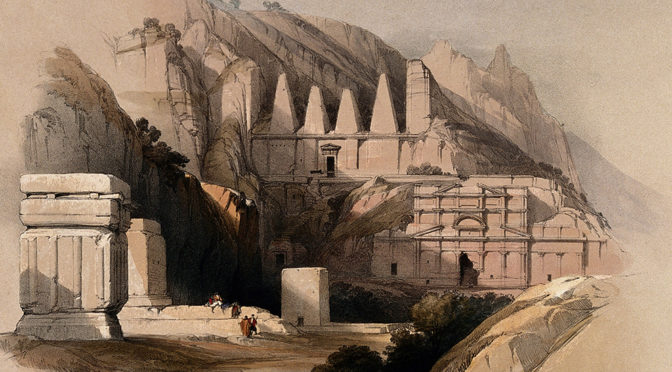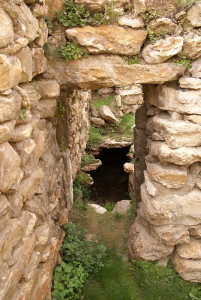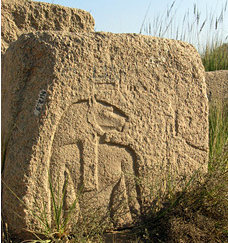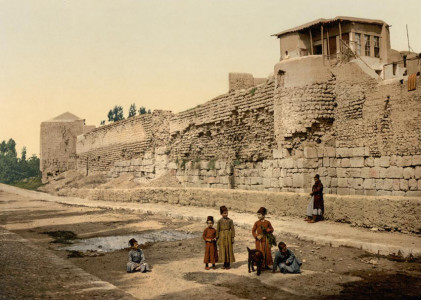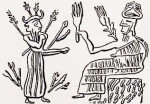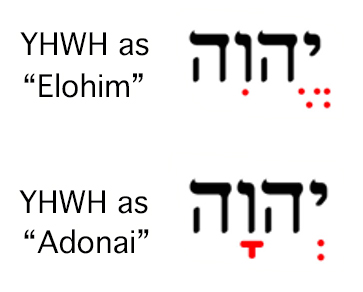 Adonai Elohim – Adonai Elohim is an ancient Hebrew term for God literally translated as “Lord God.” Adonai is generally translated as “lord,” or “master,” although it has ancient roots meaning “father” as well. Elohim is the plural form of the Hebrew word el, “god.” Interpreters disagree over why the word is plural. In addition to the phrase appearing on its own, either the word Adonai, or Elohim, or both, were spoken aloud instead of the actual name of God, YHWH. Originally written Hebrew had no vowels, only consonants. Later, when vowels were added to the text as tiny dots and lines, editors inserted the vowel points used in the words Adonai or Elohim wherever the name YHWH appeared, to remind readers never to speak the name of God aloud.
Adonai Elohim – Adonai Elohim is an ancient Hebrew term for God literally translated as “Lord God.” Adonai is generally translated as “lord,” or “master,” although it has ancient roots meaning “father” as well. Elohim is the plural form of the Hebrew word el, “god.” Interpreters disagree over why the word is plural. In addition to the phrase appearing on its own, either the word Adonai, or Elohim, or both, were spoken aloud instead of the actual name of God, YHWH. Originally written Hebrew had no vowels, only consonants. Later, when vowels were added to the text as tiny dots and lines, editors inserted the vowel points used in the words Adonai or Elohim wherever the name YHWH appeared, to remind readers never to speak the name of God aloud.
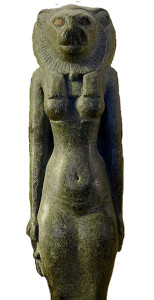 Ailuros – the ancient Greek name for the Egyptian goddess Bast/Bastet.
Ailuros – the ancient Greek name for the Egyptian goddess Bast/Bastet.
 al-‘Uzza—Al-‘Uzza was a goddess worshipped throughout pre-Islamic Arabia, along with the goddesses Allat and Manat. In Nabataea she appears to have been worshipped as the reigning goddess, along with their principal male god Dushara. As Greco-Roman culture gradually impacted Nabataea, al-‘Uzza merged with Isis and Aphrodite/Venus. She was associated with lions and both the morning and evening star.
al-‘Uzza—Al-‘Uzza was a goddess worshipped throughout pre-Islamic Arabia, along with the goddesses Allat and Manat. In Nabataea she appears to have been worshipped as the reigning goddess, along with their principal male god Dushara. As Greco-Roman culture gradually impacted Nabataea, al-‘Uzza merged with Isis and Aphrodite/Venus. She was associated with lions and both the morning and evening star.
Ammon—originally an Iron Age city of the Ammonite people. Its name was changed by the Ptolemies to Philadelphia, and was considered one of the cities of the Decapolis under that name. But the name change was never taken seriously by anyone but the Ptolemies themselves. In common usage it remained unchanged. Today it is called Amman.
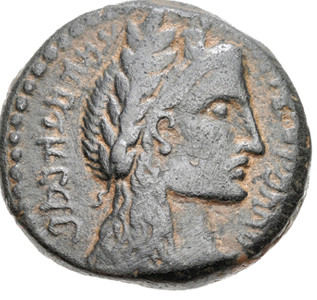 Aretas IV – Aretas IV, Philopatris (“Lover of his People”), was king of Nabataea from approximately 9 BCE to 40 CE. He had a typically stormy relationship with his Jewish neighbors to the north, primarily because of disputes over borders. The arranged marriage of his eldest daughter to Herod Antipas was probably a demonstration to the Romans of his peaceful intentions toward the Jews. His reign was one of the most prosperous in Nabataea’s history. Most of the ornate tombs and temples in Petra (then Rekem) date to the period of his ambitious building programs. When Antipas made plans to divorce Aretas’ daughter, she fled home to Nabataea, where simmering hostilities boiled over into open war somewhere around 36 CE. Aretas defeated Antipas’ troops, claiming much of Perea for his own, but Roman pressure forced him to withdraw. It may have been during this period, as Aretas was extending his borders northward, that he was mentioned in the New Testament book of II Corinthians as the king whose ethnarch attempted to arrest the Paul the apostle in Damascus; however, scholars continue to disagree about the significance of that reference.
Aretas IV – Aretas IV, Philopatris (“Lover of his People”), was king of Nabataea from approximately 9 BCE to 40 CE. He had a typically stormy relationship with his Jewish neighbors to the north, primarily because of disputes over borders. The arranged marriage of his eldest daughter to Herod Antipas was probably a demonstration to the Romans of his peaceful intentions toward the Jews. His reign was one of the most prosperous in Nabataea’s history. Most of the ornate tombs and temples in Petra (then Rekem) date to the period of his ambitious building programs. When Antipas made plans to divorce Aretas’ daughter, she fled home to Nabataea, where simmering hostilities boiled over into open war somewhere around 36 CE. Aretas defeated Antipas’ troops, claiming much of Perea for his own, but Roman pressure forced him to withdraw. It may have been during this period, as Aretas was extending his borders northward, that he was mentioned in the New Testament book of II Corinthians as the king whose ethnarch attempted to arrest the Paul the apostle in Damascus; however, scholars continue to disagree about the significance of that reference.
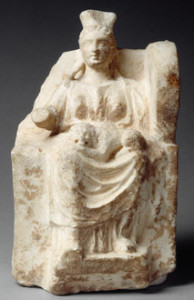 Baalbek goddess—the goddess enshrined with Jupiter and Mercury in the great temple at Baalbek, Lebanon, has never been definitely named. Scholars have identified her as Atargatis, Venus/Aphrodite, and others. She is certainly accompanied by sphinxes, and is often associated with lions.
Baalbek goddess—the goddess enshrined with Jupiter and Mercury in the great temple at Baalbek, Lebanon, has never been definitely named. Scholars have identified her as Atargatis, Venus/Aphrodite, and others. She is certainly accompanied by sphinxes, and is often associated with lions.
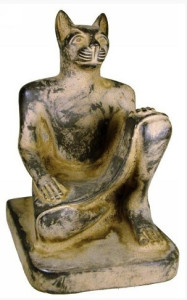 Bast/Bastet—Bast was a cat/lion goddess who served as protector and defender of the Pharaoh and later of the sun god Ra in the 3rd and 2nd millennia BCE. Near the beginning of the first millennium BCE she became known by many as Bastet, and was increasingly identified with the Egyptian domestic cat. She retained her protective role, influenced by the domestic cat’s skill in dealing with snakes and rodents, and also became associated with fertility and motherhood. Worship of Bast/Bastet was finally outlawed in 390 CE, after Christianity became the official religion of the Roman Empire.
Bast/Bastet—Bast was a cat/lion goddess who served as protector and defender of the Pharaoh and later of the sun god Ra in the 3rd and 2nd millennia BCE. Near the beginning of the first millennium BCE she became known by many as Bastet, and was increasingly identified with the Egyptian domestic cat. She retained her protective role, influenced by the domestic cat’s skill in dealing with snakes and rodents, and also became associated with fertility and motherhood. Worship of Bast/Bastet was finally outlawed in 390 CE, after Christianity became the official religion of the Roman Empire.
 benu bird—The benu bird was a mythical Egyptian bird similar to the Greek phoenix, who came to the temple of Atum at Heliopolis and landed on the sacred benben stone whenever it was time for him to die and be reborn from his ashes—which signaled the end of one age and the beginning of a new one. The benu bird resembled a large wading bird. Tikos described its myth in detail in A Cat Out of Egypt.
benu bird—The benu bird was a mythical Egyptian bird similar to the Greek phoenix, who came to the temple of Atum at Heliopolis and landed on the sacred benben stone whenever it was time for him to die and be reborn from his ashes—which signaled the end of one age and the beginning of a new one. The benu bird resembled a large wading bird. Tikos described its myth in detail in A Cat Out of Egypt.
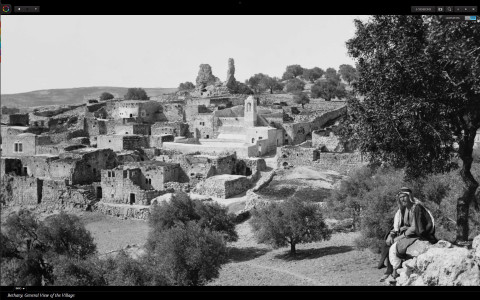
Bethany—A small town to the east of Jerusalem where Yeshua’s good friends Mary, Martha, and Lazarus lived. There is some disagreement about how the name “Bethany” should be translated. “House of figs” was one possibility, but I decided to go with the translation “house of the poor/poverty/affliction,” or “poor-house,” which is the translation most scholars choose. I identified Lazarus’ community as one of the Essene hospices, which were located in several areas in Israel.
Bubastis—Northern Egypt’s largest and most important temple to the goddess Bast/Bastet was located at Bubastis, or Per Bast (“House of Bast”). The Old Testament prophet Ezekiel mentions Bubastis (Pi-beseth, in Ezek 30:17) when he prophesies the doom awaiting Egypt in the day of the Lord. He probably singled out Bubastis because of the licentious reputation of its annual festival.
cats (of Rekem)—I have imagined the cats of Rekem as being similar to ancient Egyptian cats: products of interbreeding between the Near Eastern wildcat and the jungle cat. Both these species of wild cats were found in ancient Jordan and Israel, as well as in Egypt, and easily could have interbred with an Egyptian mau like Daughter of Fire.
 chukar—a Eurasian partridge known for its strutting and aggressive mating displays.
chukar—a Eurasian partridge known for its strutting and aggressive mating displays.
Damascus—one of the most important commercial centers in the ancient Middle East, due to its location at the intersection of caravan routes connecting the Mediterranean with Asia and Africa. There is evidence of its having been continuously occupied since approximately 10,000 BCE, but it didn’t emerge as a major urban center until between 2 and 3,000 BCE. In the 1st Century CE, it was loosely governed by the Roman Empire and may have been considered one of the Decapolis cities. Damascus was largely rebuilt during the Greek and later Roman occupations, including the city wall, temples, colonnaded markets, and sewer systems, as well as the grid system of the city streets. Very little of ancient Damascus has survived because of its continuous occupation through the years, although parts of the old Roman and Greek walls and gates may still be seen, as well some remains of the ancient temple of Jupiter incorporated into the Great Mosque.
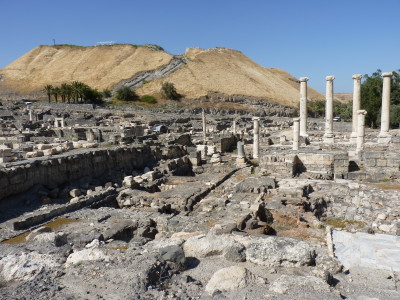 Decapolis—Decapolis meant literally “ten cities” in Greek, and referred to a loosely knit group of ancient cities in what is now Israel, Jordan, and Syria. No one can say for sure which cities were included in the ten–or even if there were exactly ten–since their relationship was never formalized in Greek or Roman law. As best we know, they were independent cities, each established as a polis, or city-state, with its own local sphere of influence. They supported each other because of their common ties of culture, similar economic interests, and commitment to the Greek, and later, Roman, empires. With the construction of Roman roads they became even more closely interconnected. Eight cities included in most lists were Gerasa, Scythopolis (or Beit-Shean), Hippos, Gadara, Pella, Philadelphia (Ammon), Capitolias, and Abila.
Decapolis—Decapolis meant literally “ten cities” in Greek, and referred to a loosely knit group of ancient cities in what is now Israel, Jordan, and Syria. No one can say for sure which cities were included in the ten–or even if there were exactly ten–since their relationship was never formalized in Greek or Roman law. As best we know, they were independent cities, each established as a polis, or city-state, with its own local sphere of influence. They supported each other because of their common ties of culture, similar economic interests, and commitment to the Greek, and later, Roman, empires. With the construction of Roman roads they became even more closely interconnected. Eight cities included in most lists were Gerasa, Scythopolis (or Beit-Shean), Hippos, Gadara, Pella, Philadelphia (Ammon), Capitolias, and Abila.
 Descender—This is the actual meaning of the Hebrew word yarden, which is usually transliterated as “Jordan” River. This is what speakers of Hebrew would have understood when the river’s name was spoken. People have speculated that the name derived from the great distance the river traveled in altitude in a short time, from its springs in the foothills of Mt. Hermon to the depths of the Dead Sea.
Descender—This is the actual meaning of the Hebrew word yarden, which is usually transliterated as “Jordan” River. This is what speakers of Hebrew would have understood when the river’s name was spoken. People have speculated that the name derived from the great distance the river traveled in altitude in a short time, from its springs in the foothills of Mt. Hermon to the depths of the Dead Sea.
 Dushara – Dushara was the principal male deity worshipped at Rekem/Petra during the last centuries prior to the Common Era into the first several centuries CE. Nabataeans commonly worshipped him alongside Zeus Helios and Dionysus. His female counterpart was probably al-Uzza.
Dushara – Dushara was the principal male deity worshipped at Rekem/Petra during the last centuries prior to the Common Era into the first several centuries CE. Nabataeans commonly worshipped him alongside Zeus Helios and Dionysus. His female counterpart was probably al-Uzza.
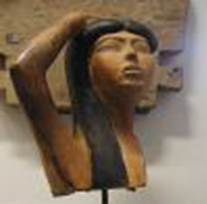 Festival of Lamentations—perhaps the most important festival in the annual cycle of the ancient mysteries of Isis, recounting the death of Osiris and Isis’ grief. The festival as it is described in The Cats of Rekem draws on a mixture of fragmentary survivals of public dramas and mysteries celebrated behind temple walls. The verses of Isis’ laments were adapted from the Laments of Isis and Nephthys, ancient Egyptian ritual words dating to the 3rd C BCE and earlier.
Festival of Lamentations—perhaps the most important festival in the annual cycle of the ancient mysteries of Isis, recounting the death of Osiris and Isis’ grief. The festival as it is described in The Cats of Rekem draws on a mixture of fragmentary survivals of public dramas and mysteries celebrated behind temple walls. The verses of Isis’ laments were adapted from the Laments of Isis and Nephthys, ancient Egyptian ritual words dating to the 3rd C BCE and earlier.
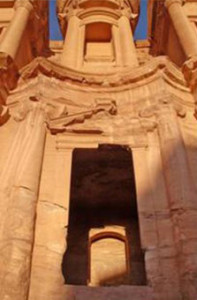 Festival of the Sun’s Returning—Winter Solstice, celebrated among many ancient cultures as the day of the high god’s birth, since in many cases a reigning male god was associated with the sun. In Rekem/Petra archaeologists have discovered that the main chamber of the structure known as ad Deir is aligned so that the setting sun at the winter solstice strikes into an altar-like area, giving rise to the theory that winter solstice ceremonies were celebrated there.
Festival of the Sun’s Returning—Winter Solstice, celebrated among many ancient cultures as the day of the high god’s birth, since in many cases a reigning male god was associated with the sun. In Rekem/Petra archaeologists have discovered that the main chamber of the structure known as ad Deir is aligned so that the setting sun at the winter solstice strikes into an altar-like area, giving rise to the theory that winter solstice ceremonies were celebrated there.
 Galilee—Galilee comprises the northern interior of Israel on the west side of the Jordan River. In the time of Yeshua it was a primarily rural area beginning in the mountains north of Samaria overlooking the Plain of Megiddo and reaching into the northern mountains toward the borders of Syria. The Mediterranean coast was not considered to be part of Galilee.
Galilee—Galilee comprises the northern interior of Israel on the west side of the Jordan River. In the time of Yeshua it was a primarily rural area beginning in the mountains north of Samaria overlooking the Plain of Megiddo and reaching into the northern mountains toward the borders of Syria. The Mediterranean coast was not considered to be part of Galilee.
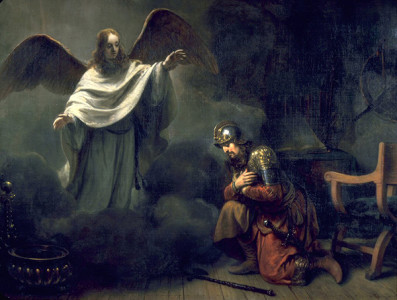 God-fearer—a non-Jewish follower of the Hebrew God, but not a full convert. Such devout gentile worshippers were not allowed beyond the outer courts of the Jerusalem temple, nor did they have any significant standing among the Jews.
God-fearer—a non-Jewish follower of the Hebrew God, but not a full convert. Such devout gentile worshippers were not allowed beyond the outer courts of the Jerusalem temple, nor did they have any significant standing among the Jews.
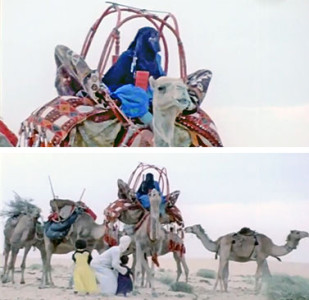 hawdaj – A hawdaj was a tent-like platform, or palanquin, in which women and children rode on camels.
hawdaj – A hawdaj was a tent-like platform, or palanquin, in which women and children rode on camels.
 Huldu—King Aretas IV’s first wife and probable mother of his successor Malichus. She was pictured on a number of early Nabataean coins with Aretas. Both his wives are sometimes spoken of as “sisters,” but whether this suggests actual brother-sister marriages or merely a metaphor is uncertain.
Huldu—King Aretas IV’s first wife and probable mother of his successor Malichus. She was pictured on a number of early Nabataean coins with Aretas. Both his wives are sometimes spoken of as “sisters,” but whether this suggests actual brother-sister marriages or merely a metaphor is uncertain.
 Isis – The Egyptian goddess Isis was the daughter of Earth (Geb) and Sky (Nut), wife of her brother Osiris, and mother of Horus. As protector of the dead, healer of all infirmities, loving wife, and nurturing mother, she grew in popularity until her cult spread across the Roman Empire. The story of her long search for her husband Osiris (killed by his brother Set), the miraculous conception of her son Horus, and the benevolent rule of their divine triad became the substance of much of Egyptian religion, and is at the heart of Isis’ mysteries. By the beginning of the 1st C CE, she was apparently accepted as an aspect of Nabataea’s reigning female deity al-‘Uzza.
Isis – The Egyptian goddess Isis was the daughter of Earth (Geb) and Sky (Nut), wife of her brother Osiris, and mother of Horus. As protector of the dead, healer of all infirmities, loving wife, and nurturing mother, she grew in popularity until her cult spread across the Roman Empire. The story of her long search for her husband Osiris (killed by his brother Set), the miraculous conception of her son Horus, and the benevolent rule of their divine triad became the substance of much of Egyptian religion, and is at the heart of Isis’ mysteries. By the beginning of the 1st C CE, she was apparently accepted as an aspect of Nabataea’s reigning female deity al-‘Uzza.
 King’s Highway – The King’s Highway was an ancient caravan route that stretched from Egypt across Sinai to the Gulf of Aqaba and from there up along the eastern side of the Dead Sea and the Jordan River to Damascus and Mesopotamia. The route was already in existence during Israel’s earliest years.
King’s Highway – The King’s Highway was an ancient caravan route that stretched from Egypt across Sinai to the Gulf of Aqaba and from there up along the eastern side of the Dead Sea and the Jordan River to Damascus and Mesopotamia. The route was already in existence during Israel’s earliest years.
 Malichus II—the son (or brother?) of Aretas IV of Nabataea and the successor to the throne. He reigned from 40 to 70 CE, and is often considered a weak ruler who allowed Rome to begin its gradual takeover of the Nabataean state.
Malichus II—the son (or brother?) of Aretas IV of Nabataea and the successor to the throne. He reigned from 40 to 70 CE, and is often considered a weak ruler who allowed Rome to begin its gradual takeover of the Nabataean state.
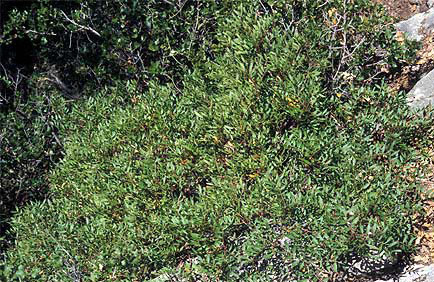 mastic shrubs—small Mediterranean shrubs with a very aromatic resin. The resin is used as a medicine, spice, and chewing gum, among other things.
mastic shrubs—small Mediterranean shrubs with a very aromatic resin. The resin is used as a medicine, spice, and chewing gum, among other things.
 Nabataean names—the names given to Nabataean characters in The Cats of Rekem were all taken from Nabataean inscriptions that have survived to the present day.
Nabataean names—the names given to Nabataean characters in The Cats of Rekem were all taken from Nabataean inscriptions that have survived to the present day.

Nabataeans – The origin of the ancient Nabataeans is unclear. They were an Arab people who first appeared in history as nomads on the edges of the lands once known as Moab and Edom. In a few hundred years they became a nation of wealthy settled merchants who controlled the lucrative caravan routes between southern Arabia, Syria, and Egypt. Their culture was at its height during the last couple of centuries BCE and first two centuries CE. Today they are remembered best for their capital city of Petra in Jordan.
 Obodas—a town south of the Dead Sea, as well as the name of two different Nabataean kings in the 1st C BCE, and a god mentioned in ancient Nabataean inscriptions. Whether one of the two kings named Obodas was later deified, or whether there was a god whom they were named for is unclear. Some scholars believe that Aretas IV divinized one of his own ancestors in an attempt to rival the divine emperors of Rome.
Obodas—a town south of the Dead Sea, as well as the name of two different Nabataean kings in the 1st C BCE, and a god mentioned in ancient Nabataean inscriptions. Whether one of the two kings named Obodas was later deified, or whether there was a god whom they were named for is unclear. Some scholars believe that Aretas IV divinized one of his own ancestors in an attempt to rival the divine emperors of Rome.
 Osiris – Osiris was one of the great gods of ancient Egypt, eldest son of Earth (Geb), brother and husband of Isis, and father of Horus. From Egypt’s earliest days he was considered to be a god of the dead, and eventually became the ruling god of the afterlife. His rebirth and miraculous fathering of son Horus offered his worshippers hope of life after death. With Isis and Horus, he was part of one of Egypt’s most powerful divine triads.
Osiris – Osiris was one of the great gods of ancient Egypt, eldest son of Earth (Geb), brother and husband of Isis, and father of Horus. From Egypt’s earliest days he was considered to be a god of the dead, and eventually became the ruling god of the afterlife. His rebirth and miraculous fathering of son Horus offered his worshippers hope of life after death. With Isis and Horus, he was part of one of Egypt’s most powerful divine triads.
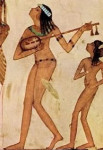 oud—a popular Middle Eastern stringed instrument similar to the lute. Ancient carvings of such instruments date appear as early as the New Kingdom in ancient Egypt and the Uruk period of Mesopotamia.
oud—a popular Middle Eastern stringed instrument similar to the lute. Ancient carvings of such instruments date appear as early as the New Kingdom in ancient Egypt and the Uruk period of Mesopotamia.
Phasaelis—the likely but not certain name of Herod Antipas’ Nabataean wife and Aretas’ daughter.
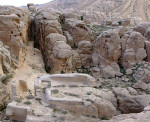 Sela—a mountaintop fortress and commercial hub of Nabataea, located north of Petra and south of the Dead Sea, along the King’s Highway.
Sela—a mountaintop fortress and commercial hub of Nabataea, located north of Petra and south of the Dead Sea, along the King’s Highway.
 Sepphoris crucifixions—When Herod the Great died in 4 BCE, a number of rebellions broke out across Palestine, among them one led by Judas the Galilean, who captured Sepphoris, a Romanized town five miles from Nazareth. The Roman general Varus retaliated quickly, sacking the city and killing or enslaving as many as 30,000 local people suspected of participating in the uprising. The leaders were crucified, and their bodies left for carrion beasts. Josephus called the rebuilt city “the ornament of all Galilee.”
Sepphoris crucifixions—When Herod the Great died in 4 BCE, a number of rebellions broke out across Palestine, among them one led by Judas the Galilean, who captured Sepphoris, a Romanized town five miles from Nazareth. The Roman general Varus retaliated quickly, sacking the city and killing or enslaving as many as 30,000 local people suspected of participating in the uprising. The leaders were crucified, and their bodies left for carrion beasts. Josephus called the rebuilt city “the ornament of all Galilee.”
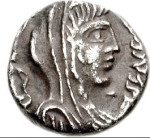 Shaqilat—second wife of Aretas IV of Nabataea.
Shaqilat—second wife of Aretas IV of Nabataea.
sistrum—at its simplest, a sistrum was an ancient metal rattle, best known as a musical instrument in the worship of Isis and Bastet/Bast. It consisted of a metal handle with a U-shaped end, pierced by three or more metal rods that rattled when shaken.
 stadia – Stadia are ancient Greek units of measure that were in common use in Roman times. One stadion is 600 feet, roughly the length of a typical Greek sports arena. One mile is approximately 8.69 stadia.
stadia – Stadia are ancient Greek units of measure that were in common use in Roman times. One stadion is 600 feet, roughly the length of a typical Greek sports arena. One mile is approximately 8.69 stadia.
Tammuz—(or Dumuzi) was a Mesopotamian god who was the husband of the goddess Ishtar (or Inanna). His worship extended across most of the ancient Near East. As a manifestation of rising and dying vegetation, his death was mourned every summer at the height of the summer heat and drought. His new birth was celebrated with the spring rains. Both his goddess wife and the women of the region lamented the death of the beloved god who represented the familiar roles any man might play: lover, husband, brother, and son

